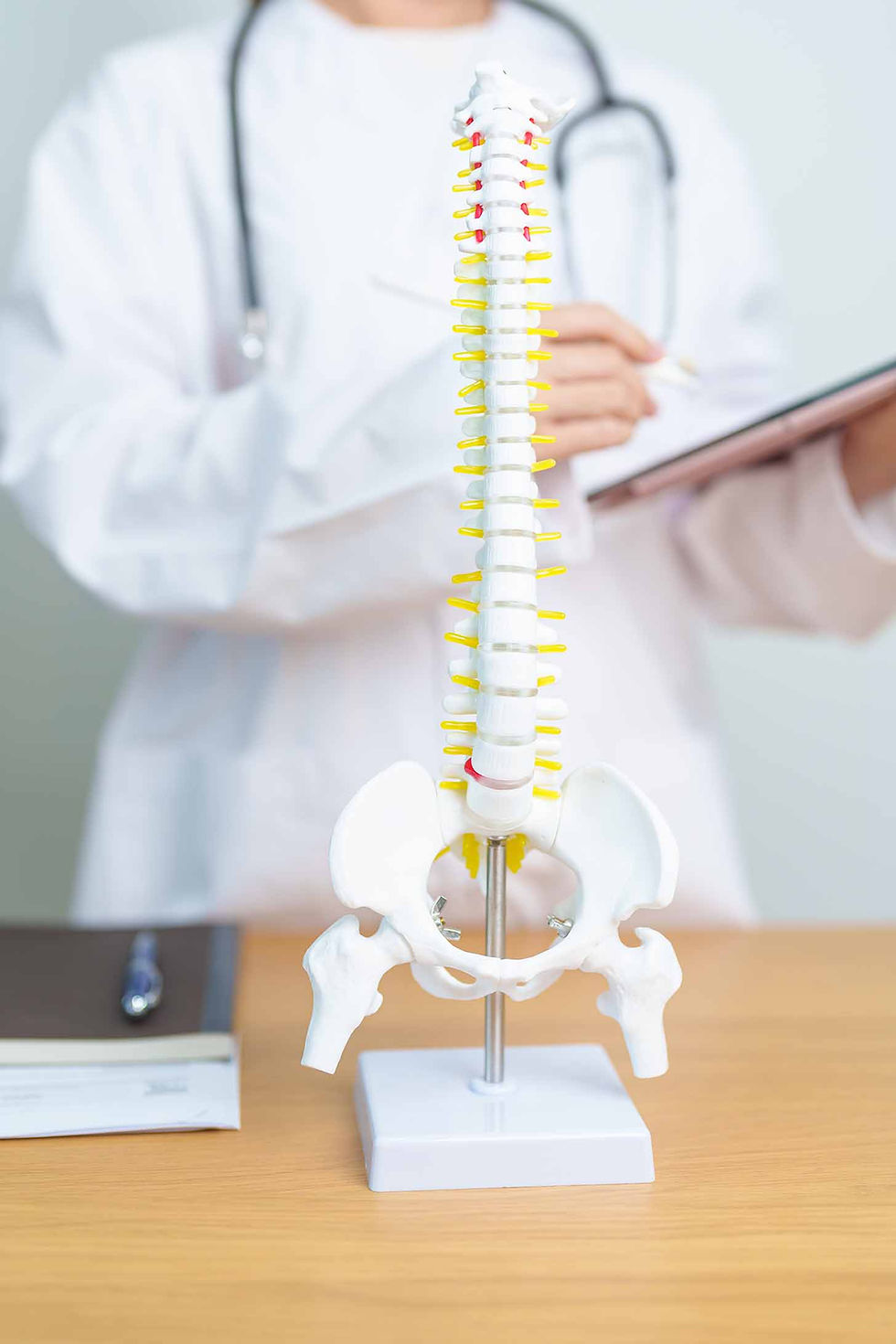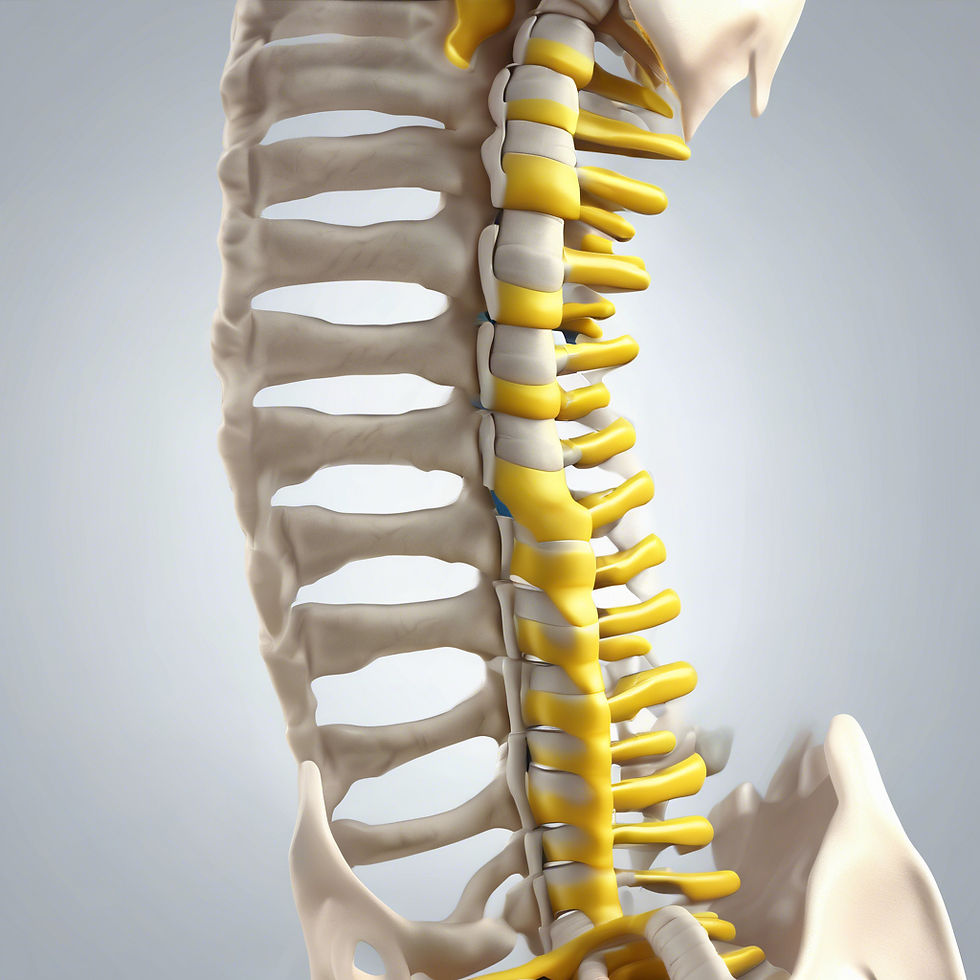

.png)
Kyphosis Treatment Options in Phoenix
What is Kyphosis?
Kyphosis is a deformity of the spine where the curve of the upper back is excessively pronounced, creating a hump or “hunchback.” The term kyphosis also describes the natural outward curvature of the spine in the upper back region. An excessive curve in this area is technically called hyperkyphosis, but in both medical and lay speech this type of spinal deformity is routinely referred to simply as kyphosis.
Kyphosis is very common during adolescence. The vast majority of cases of kyphosis do not require surgical treatment. Mild kyphosis often resolves with simple measures to improve posture.
DR. BAIG IS AN EXPERIENCED KYPHOSIS SPECIALIST WHO WILL DISCUSS ALL KYPHOSIS TREATMENT OPTIONS WITH YOU SO YOU CAN MAKE AN INFORMED DECISION BASED ON WHAT’S RIGHT FOR YOUR CHILD.

Types of Kyphosis
There are three different types of kyphosis. The kyphotic spine treatment options available may depend on the type of kyphosis your child has.
1. Postural Kyphosis
Postural kyphosis is the most common and is not associated with structural deformities in the spinal column. It usually becomes apparent during adolescence in the form of poor posture or “slouching,” and is caused by the spinal muscles and ligaments pulling out of their proper alignment.
With postural kyphosis, since there’s no vertebral deformity, the rounding of the back is flexible in nature and generally resolves when the child is asked to “stand up straight.” It is more common in girls than boys, and does not typically cause pain or problems into adulthood.
2. Scheuermann’s Kyphosis
Scheuermann’s Kyphosis is characterized by changes in the shape of the spinal vertebrae, meaning it’s structural rather than posture-related in nature.
Normal vertebrae are rectangular in shape. However, in cases of Scheuermann’s Kyphosis, the vertebrae have a more triangular shape, which makes the bones “wedge” together. This wedging causes a sharper, more angular curve to develop in the upper back.
-
The curve is rigid, not flexible, so it won’t resolve when the patient changes posture.
-
Symptoms typically include a painful upper back, stiffness when sitting, muscle cramps, and reduced flexibility. The upper back is often more painful after prolonged periods of standing or sitting.
Scheuermann’s Kyphosis is more common in boys than girls, and it usually appears in teens. Scheuermann’s Kyphosis can be diagnosed by x-ray.
3. Congenital Kyphosis
With congenital kyphosis, the child is born with a spinal defect caused by improper development of the spinal column in the womb. The vertebrae fail to grow fully or they fuse together, which can cause pain and a curve in the upper back.
-
The condition may not be noticeable immediately, although some children are born with a spinal curve or postural abnormalities.
-
As the child grows, the vertebrae can compress the spinal cord, which may cause motor defects and nerve damage if left untreated.
Congenital kyphosis often worsens over time.


Treatment for Kyphosis
With a kyphotic spine, treatment depends on the underlying cause.
In cases of postural kyphosis, doctors may choose to simply monitor your child over time as they work on practicing good posture. Periodic x-rays may be taken to ensure the condition isn’t worsening. Dr. Baig can provide postural kyphosis treatment in Phoenix.
In moderate cases, Dr. Baig may recommend physical therapy to strengthen muscles that support the spine and to relieve tension in areas affected by misalignment. If your child is experiencing pain, appropriate pain medications can be prescribed. Children who are still growing may benefit from a back brace to encourage proper development.
Spinal surgery may be necessary in more severe cases, or to correct congenital kyphosis to reduce the risk of spinal cord compression.
Dr. Baig is skilled and experienced in many types of spinal fusion surgery, including minimally invasive techniques. As kyphosis can often be treated conservatively, surgery will only be recommended if Dr. Baig is certain your child will benefit.
To find out more about kyphosis surgery in Phoenix, kyphosis correction options, or postural kyphosis treatment, contact Desert Spine and Scoliosis Center today.

Get maximum relief with minimal risk

MINIMALLY INVASIVE
SPINE PROCEDURES
ENDOSCOPIC
SPINE SURGERY
STEREOTACTIC
SPINE PROCEDURES
NON-SURGICAL
TREATMENT OPTIONS

WE DIAGNOSE THE ROOT
Chronic back pain can be debilitating and leave you feeling hopeless. When Craig wasn’t getting the care he felt he deserved, he reached out to Dr. Baig to get the help he needed.
Unfortunately, this is a common problem: People suffering from back pain see a doctor, get diagnosed with some type of “chronic” condition, obtain a prescription and perhaps go to a few physical therapy appointments. They feel a bit better for a time, but the root of the problem is never diagnosed or properly treated. This is how back pain can become chronic, and this is why people ultimately seek the help of Desert Spine and Scoliosis center, expert back surgeons in Phoenix.
Dr. Baig, one of the most respected back surgeons in Phoenix, helped Craig identify his problem by relying on his years of expertise as a spine specialist in Phoenix. With the proper treatment, Craig’s condition improved and he was able to get back into life without the terrible pain that had dragged him down for so long. This is what patients should reasonably expect from our team of Phoenix spine surgeons.
SUCCESS STORIES
For an active 39 year old who participates in Jiujitsu, having a spinal fusion would not have been the right thing for her. We were able to get her back on the mat after a successful disc replacement and she is back living her life
NO MORE BACK PAIN!
For an active young mom, having a spinal fusion was out of the question.
She was back in the gym THE SAME DAY after she had an Endoscopic Decompression. Dr. Baig and is living life
PAIN FREE!
This personal trainer got a cervical disc replacement.
She was able to avoid a fusion, keep her her range of motion, and get back
into the gym
PAIN FREE!

WHAT OUR PATIENTS SAY
We wanted to take a moment to express our heartfelt gratitude to our patients who take the time to leave a review about their experience at our practice.
Your kind words and feedback are greatly appreciated by our entire team, and your review helps other patients make an informed decision about where to turn to for care.
Thanks again for sharing your experience with others. You are making a difference.
T.M. ~ Actual Patient
"Dr Baig and his team are phenomenal. I had a compressed nerve due to a bulging disc and was able to be seen relatively quickly. Surgery was quick and flawless and I have no complaints at all. I truly appreciated how fast they worked to get me seen and out of all the pain I was in! Highly recommend them."
A.H. ~ Actual Patient
"Dr Baig literally changed my life for the better. I had a severely pinched nerve in my neck and needed to get surgery. Immediately at my first consult I felt comfortable and in good hands. I even walked away with a smile on my face during that scary time.
Surgery day couldn’t have gone better. The team he had also had a great bedside manner and helped keep me calm.
After the surgery and in the recovery room, he came in and checked on me and made sure I was all good before releasing me."
S.D. ~ Actual Patient
"Dr Baig was going to be my second opinion for an upcoming scheduled spinal surgery. After my appointment, he will be my surgeon. He gave me a lot of information that was lacking from my other doctors. I felt very comfortable with Dr Baig and his entire office staff. Looking forward to living pain free after we strengthen my bones. It’s going to be a permanent fix and not a bandaid."
Consult Our Back Surgeons in Phoenix
Back pain can often be a result of an accident, injury, or congenital conditions such as scoliosis. Certain forms of back pain can be a result of the natural aging process, including conditions such as disc protrusion and spinal stenosis.
Today, advancements in imaging, and non-surgical techniques have led to more treatment options than ever before, allowing us to return our patients the life they once knew…usually without the need for invasive spine surgery.
Typically, back surgeons in Phoenix offer one type of help, even though there are many others available. When you work with Dr. Baig at the Desert Spine and Scoliosis Center, you can rest assured that everything is on the table when it comes to potential treatments that are accepted by the medical world.
CONTACT US
Kyphosis Treatment FAQs
1. Can kyphosis cause tension headaches?
Yes. The abnormal curvature of the upper spine can cause muscle strain in the neck and shoulders, which may lead to tension headaches. Physical therapy and posture correction are common approaches to reduce these symptoms.
2. Can kyphosis affect breathing?
Severe kyphosis can reduce lung capacity by limiting the space in the chest cavity, leading to shortness of breath or restricted breathing. Early evaluation by a kyphosis specialist is recommended to prevent long-term respiratory complications.
3. What are the best non-surgical treatments for kyphosis?
The most common non-surgical treatments for kyphosis include physical therapy, posture training, stretching, and bracing for growing children. These approaches help strengthen spinal support muscles, improve posture, and prevent curve progression.
4. When is surgery recommended for kyphosis?
Kyphosis surgery is typically recommended when the curvature exceeds 70–80 degrees, causes significant pain, or begins to affect breathing or nerve function. Your kyphosis doctor will determine whether a minimally invasive or fusion-based approach is most appropriate.
LOCATIONS
Conservative care you can trust, with multiple locations in the valley!
Just how ‘minimal’ is minimally invasive spine surgery?
Book your appointment today and we'll be happy to educate you!
As a top-rated spine specialist, Dr. Baig understands that this complicated part of the body can lead to many different problems, and each possibility will be considered before deciding on a treatment protocol.
Get answers, get help, get back to a better quality of life––schedule an appointment today.
_PNG.png)



